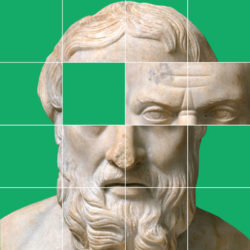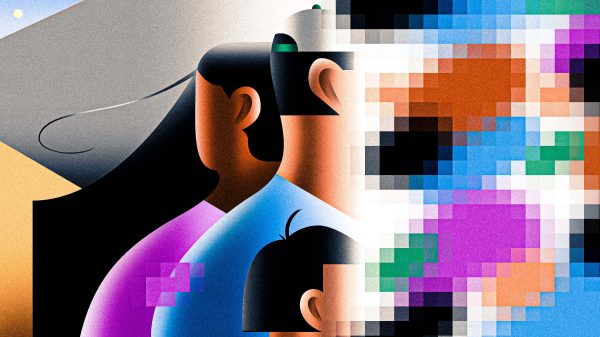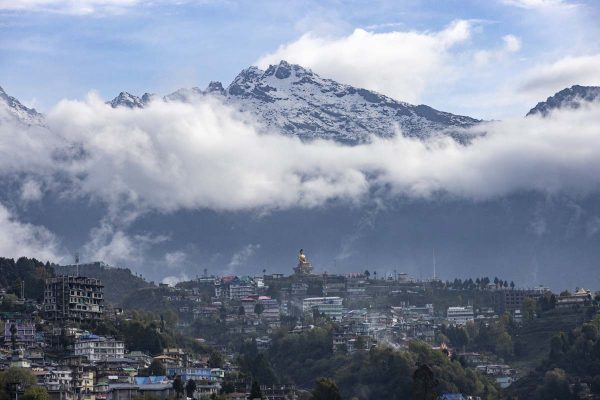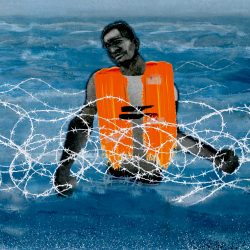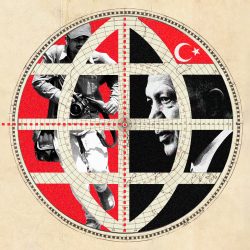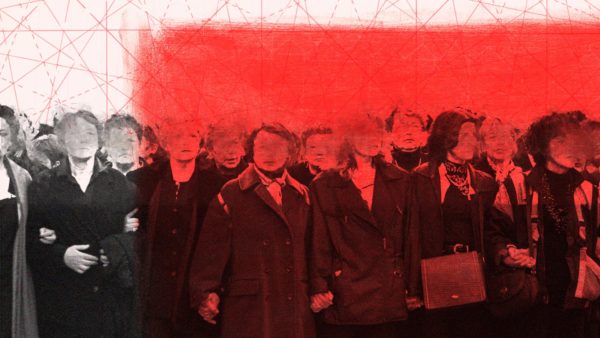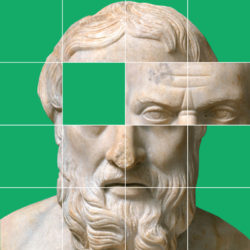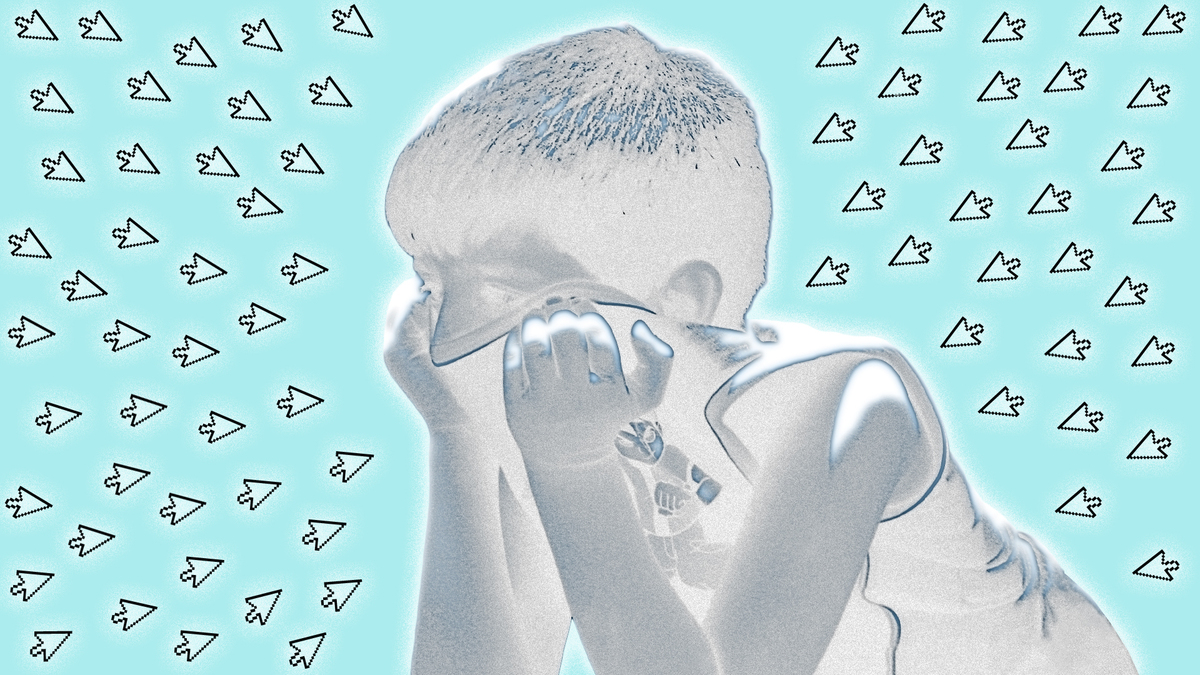
Teona Tsintsadze/Getty Images
‘I cannot hide’: Viral photos from Kashmir conflict haunt subjects for years
After surviving a missile strike that left her covered with cuts from shrapnel, and could have killed her newborn baby, a Ukrainian mother breastfed her tiny daughter in a Kyiv hospital. When a news photographer captured her image, it quickly went viral online.
The photo has already become an iconic representation of the devastation suffered by Ukrainians in the war. But years from now, what will it mean for this young woman and her child? Images of adults and children severely impacted by violence endure in public and personal memory — forever stored on the internet and making a comeback every now and then.
Thousands of miles away, in Kashmir — home to one of the world’s longest-running conflicts — the long-term effects of an image like this can be extreme for a private individual. The consequences can be life-changing.
Consider the ordeal of Farooq Dar. In 2017, after casting his ballot in a contentious election that had led to a spike in public violence, Indian army officers famously apprehended the 33-year-old Kashmiri man, beat him and then tied Dar to the front of a jeep. They drove for 17 miles with Dar strapped to the vehicle’s spare tire, effectively using him as a human shield in a conflict zone, where the army was vulnerable to attack.
When the vehicle came to a halt, army officers themselves snapped Dar’s picture, even as he begged to not be photographed. “In those moments, I felt like I should have never existed. My lips were bleeding and they had broken my elbow,” Dar recalled. Photos of the scene instantly went viral on social media.
The images provoked massive outrage, but the Indian army defended its actions, as did the government. Supporters of the ruling Bharatiya Janata party sold T-shirts featuring images of the incident, bearing the caption: “Indian Army saving your a**, whether you like it or not!” The incident was even recreated in a Bollywood movie.
“They were making money out of my tragedy. Indians used me terribly,” Dar told me in a recent interview.
“When they clicked my picture and uploaded it on the internet, they showed the world how brave they were without thinking about how it would ruin my life.”
Kashmir’s long-standing political conflict
The conflict in the Kashmir Valley began in 1947 with the fall of the colonial British Empire and the subsequent emergence of a relatively secular India, and Pakistan, a homeland sought by Muslims who feared a Hindu majoritarian assault. Territories like Kashmir were given the option, at least on paper, to accede to either dominion. Kashmir fell into a quagmire: it was, and still is, predominantly Muslim but was ruled by a Hindu autocrat who conditionally acceded to the Indian Union on the promise, made by India’s first prime minister, of a plebiscite in which residents of the region would decide which country they wanted to belong to. But the plebiscite never took place.
Kashmiris have lived through generations of political conflict and uncertainty ever since, with many continuing to demand their right to self-determination from an indifferent New Delhi. Their defiance has been met with the pervasive presence of the Indian army; sweeping curfews and communication shutdowns; economic isolation; extrajudicial killings and torture; and a long list of other human rights violations.
‘I cannot hide’
At first, Dar had no idea that photos of the incident had gone viral. The internet was shut down in Kashmir, as is often the case. When the connection came back, Dar discovered that he had become known as “the human shield” — a title he is still unable to escape, five years on.
People recognized him everywhere. He was suddenly unable to find a job, or even a woman to marry.
All potential matches were unnerved by what had happened to him. Eventually, a year later, Dar married a woman from the Jammu division of Jammu and Kashmir state, who had no knowledge of what had happened to him. He keeps the story from her, even now.
Dar has attempted suicide. He has thought of running away from Kashmir and starting anew, but he fears this would not be enough.
“I cannot hide. That is what the internet does to you. One share and the world knows you,” he said.
“[For as long as] the internet exists, this picture will exist. They almost killed me that day but I survived,” said Dar.
Haunted from an early age
Dar is not entirely alone. Faizan Sofi has endured a similar trauma for a decade. When he was just 12 years old, Sofi was arrested on rioting allegations, after a picture of him throwing stones appeared online.
“I was too young. It was a mistake that we promised would never be repeated,” he said.
A few days after his arrest, while Sofi was being transferred from the court to a juvenile facility, he and his younger sister sobbed as she clung to his arm. A journalist captured the moment, and soon the photograph went viral online. Although it created a wave of sympathy for the children and intense criticism of the government at the time, the photo haunted Sofi into adulthood.
In 10 years since the incident, Sofi has been arrested five more times. After the police arrested him on campus, he dropped out of school. Friends deserted him. Like Dar, he has been unable to find work. He still grapples with depression and sleeplessness.
“Over the years, I have been shown my photo so many times. And even though I know that I did not do anything wrong, it hurts,” he said.
One of the youngest people known to be facing this challenge is a five-year-old Kashmiri boy, who was famously photographed two years ago, sitting atop the body of his grandfather, who was slain in the crossfire of a gun battle that broke out in the northern city of Sopore. The boy’s family members now try to restrict his internet access, in order to prevent him from finding his own image there. They told me they wish that whomever took the photograph had blurred the boy’s face before sharing it with the world.
“We are sure that if he sees his picture someday, it will all come back to him because he has mild memories of the day that he is not able to comprehend,” said the boy’s uncle.
Who has the right to be forgotten?
This is not a new phenomenon — photos like Nick Ut’s 1973 “The Terror of War” (also known as “Napalm Girl”) that showed a naked girl, screaming and running from a napalm attack in South Vietnam, had similar effects. But in the digital era, such images move at lightning speed, often without the scrutiny of an editor.
Anuradha Bhasin, executive editor of “The Kashmir Times,” one of Jammu and Kashmir’s oldest newspapers, said that journalists need to consider the pitfalls of uploading photographs of victims. “How is it that we circulate those pictures, and in what context?” she asks.
But she acknowledges that the problem is hardly exclusive to journalists. The very nature of digital networks — in which anyone can easily copy and re-share an image or video — guarantees that a piece of content may always exist or resurface somehow. Indeed, there is no surefire recourse for people like Sofi or Dar. But intervention by the courts or by major internet companies can make a difference, by reducing or even prohibiting their distribution.
Apar Gupta, an Indian legal expert and the executive director of the New Delhi-based Internet Freedom Foundation, points to “the right to be forgotten,” part of Europe’s data privacy and security law, the General Data Protection Regulation. The provision allows any person convicted of a crime, after serving their sentence or being proved innocent, to demand the erasure of their personal data. Companies like Google have built substantial systems for processing and adjudicating “right to be forgotten” claims in Europe.
Although some other jurisdictions have legal frameworks that help people assert a right to their image, most countries, India included, do not have comprehensive data protection laws that might help people facing these situations.
Gupta said that the right to be forgotten requires a clearer definition than what is on the books in Europe, as it can be subject to misuse by people in positions of power, politicians in particular, who may seek to cleanse the internet of information that might harm their reputations.
“At present, the right to be forgotten is being litigated in several cases in India where people are asking for their personal details to be removed from search engine results regarding cases in which they have litigated,” he added.
In India, a data protection bill addressing the right to be forgotten was tabled in Parliament in 2019. Although petitioners have brought data protection cases to multiple courts, the issue has yet to be backed by statute.
The internet never forgets
Social media platforms like Facebook and YouTube also have a role to play here, as major distributors of these kinds of images. But none of the leading companies provide a mechanism for people to ask that their images be removed from these sites, unless the images already violate the sites’ content rules covering things like nudity and gratuitous violence. The photos in question do not fall into this category — it is the context in which they were taken that makes them so powerful.
But artificial intelligence and human moderators at social media companies are capable of blocking content and drastically reducing its circulation, said Maknoon Wani, an incoming graduate at the Oxford Internet Institute.
“What internet providers, social media companies, and other content curators can do is limit the reach, they can try to scrub it as efficiently as possible. It can be removed to an extent that a common internet user cannot access that content,” said Wani. “A child or a person who might get traumatized because of that photo or video will not be exposed to that content.”
If social media companies allowed users to ask for content to be removed on these grounds, it could help to reduce the long-tail effects of these kinds of images for their subjects. But there is no indication that this will happen any time soon.
Zoya Mir, a clinical psychologist based in Kashmir, spoke with me about how photos like this can compound mental health issues for people in these situations, who have already experienced a serious trauma. Part of the challenge, especially for young people like Sofi, lies in finding a way to move on. For people in any conflict zone, the internet makes this uniquely difficult.
“By putting an image on the internet, we break the notion of something actually being over,” said Mir. “We put it on a continuum, that is forever.”
The story you just read is a small piece of a complex and an ever-changing storyline that Coda covers relentlessly and with singular focus. But we can’t do it without your help. Show your support for journalism that stays on the story by becoming a member today. Coda Story is a 501(c)3 U.S. non-profit. Your contribution to Coda Story is tax deductible.



